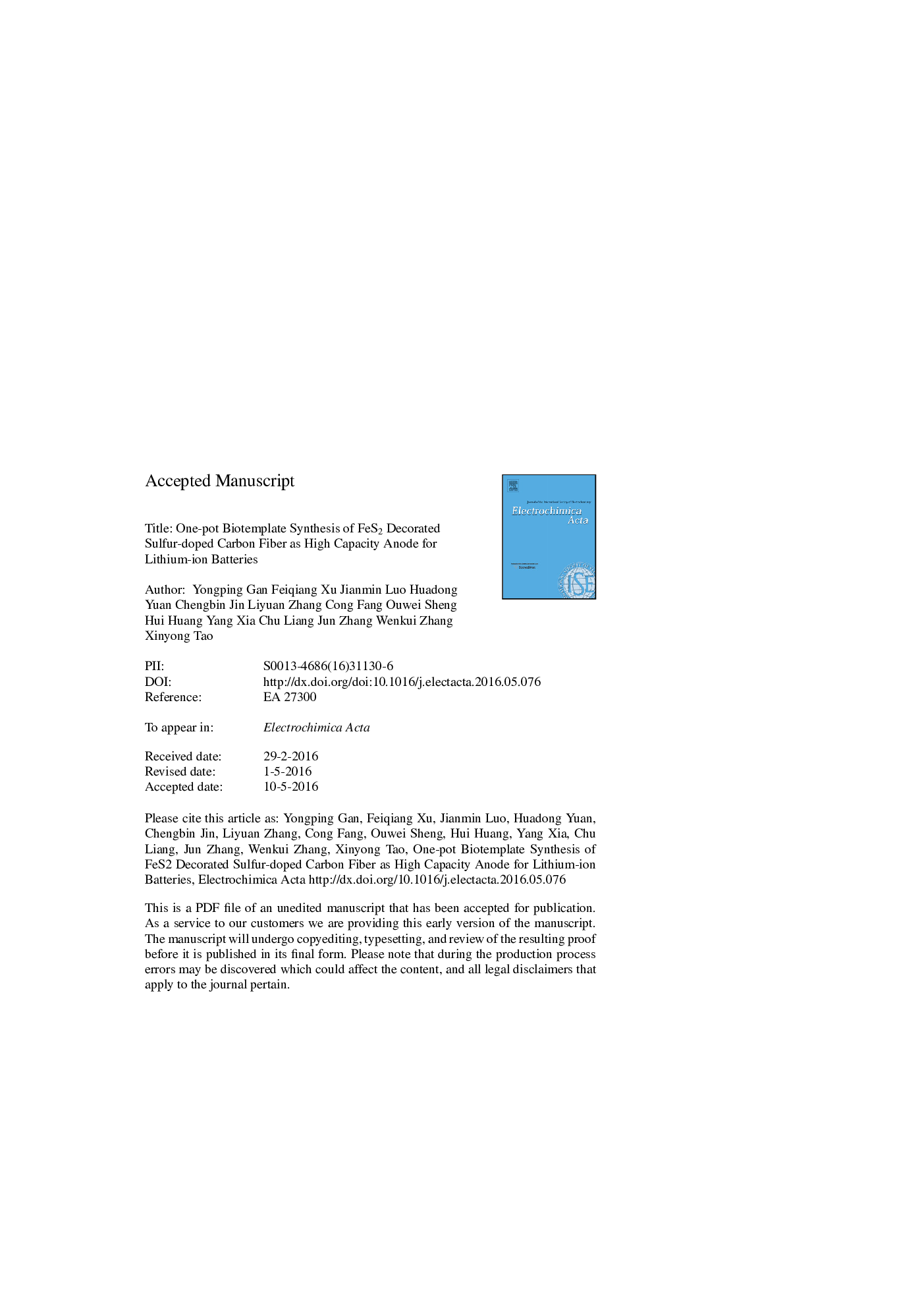| Article ID | Journal | Published Year | Pages | File Type |
|---|---|---|---|---|
| 6606780 | Electrochimica Acta | 2016 | 30 Pages |
Abstract
Pyrite FeS2 decorated sulfur-doped carbon (FeS2@S-C) fibers have been successfully synthesized by a facile bio-templating method and applied as the anode material for lithium ion batteries (LIBs). Cotton was used as both the carbon source and the template. SEM and TEM results showed that the FeS2 nanoparticles fabricated using 0.2 M FeSO4 were uniformly embedded in or attached on the surface of the carbon fibers. FeS2@S-C synthesized with 0.2 M FeSO4 showed the best cycle stability and rate capability, which retained a high reversible specific capacity of 689 mAh gâ1 after 100 cycles. The specific capacities are about 1200, 900, 700, 550 and 400 mAh gâ1 after every 10 cycles at 0.1, 0.2, 0.5, 1 and 2 A gâ1. The excellent electrochemical performance can be ascribed to the highly conductive sulfur-doped carbon and the homogeneous distribution of FeS2 nanoparticles. It is believed that the S-doped carbon matrix acts as an effective buffer layer helping relieve the volume strain as well as a hinder preventing FeS2 from aggregating during cycling, which ensure the high electrochemical performance. This kind of low-cost anode with high specific capacity and improved cycling stability show potential application for high capacity lithium-ion batteries.
Related Topics
Physical Sciences and Engineering
Chemical Engineering
Chemical Engineering (General)
Authors
Yongping Gan, Feiqiang Xu, Jianmin Luo, Huadong Yuan, Chengbin Jin, Liyuan Zhang, Cong Fang, Ouwei Sheng, Hui Huang, Yang Xia, Chu Liang, Jun Zhang, Wenkui Zhang, Xinyong Tao,
